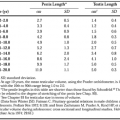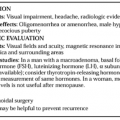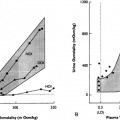PITUITARY TUMORS: OVERVIEW OF THERAPEUTIC OPTIONS
Philippe Chanson
Chapter 21, Chapter 22 and Chapter 23 discuss, respectively, medical, radiologic, and surgical therapies of pituitary tumors. This chapter reviews the current literature and draws on the author’s own experience to systematically discuss and compare the different therapeutic options, their applicabilities, and their limitations. Whenever possible, an attempt has been made to categorize, in a statistical manner, response rates and recurrences.
Pituitary tumors are relatively common neoplasms of the adenohypophyseal cells; they represent ˜15% of all intracranial tumors.1,2 The prevalence of clinically recognizable pituitary adenomas is ˜200 cases per million, and new cases number 15 per million per year.3 However, asymptomatic adenomas (mostly microadenomas) are found in 6% to 20% (mean, 11%) of
presumably normal pituitary glands. This has been demonstrated by autopsy studies4,5 and by systematic magnetic resonance imaging (MRI) studies.6 Thus, pituitary adenomas—whether detected by clinical manifestations or by pituitary imaging that is performed for unrelated reasons (i.e., incidentalomas)—are becoming more frequently diagnosed. Therapeutic recommendations are based on previously reported studies that have evaluated results of various treatment strategies. However, few large comparative trials have been undertaken. Thus, therapeutic guidelines often are somewhat subjective.
presumably normal pituitary glands. This has been demonstrated by autopsy studies4,5 and by systematic magnetic resonance imaging (MRI) studies.6 Thus, pituitary adenomas—whether detected by clinical manifestations or by pituitary imaging that is performed for unrelated reasons (i.e., incidentalomas)—are becoming more frequently diagnosed. Therapeutic recommendations are based on previously reported studies that have evaluated results of various treatment strategies. However, few large comparative trials have been undertaken. Thus, therapeutic guidelines often are somewhat subjective.
Stay updated, free articles. Join our Telegram channel

Full access? Get Clinical Tree







